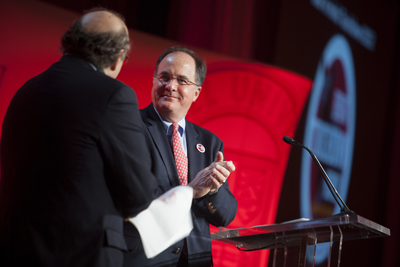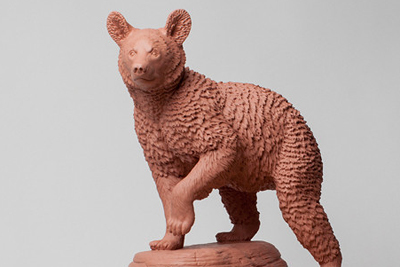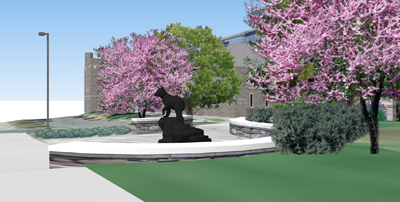Bear of a project will commemorate Cornell 'unmascot'
By Joe Wilensky



A bronze statue will pay tribute to the four black bear cubs who served as Cornell's unofficial, original mascot, Touchdown. John H. Foote '74 and Joseph Thanhauser '71 are spearheading a project to erect the statue and create new landscaping on the corner of Campus Road and Garden Avenue near the front entrance to Teagle Hall. The site was chosen because of its proximity to Schoellkopf Field and because that corner is a campus gateway -- one of the first sights visitors encounter on that side of campus.
Calling Touchdown an "iconic Cornell personality" and "our beloved unmascot," Foote, author of "Touchdown: The Story of the Cornell Bear," announced plans for the statue during the Cornell Alumni Leadership Conference in Boston Jan. 19. The statue will be funded entirely as a gift from alumni and friends.
The statue is expected to be unveiled at Homecoming 2015, during Cornell's sesquicentennial year. That year also marks the 100th anniversary of the first Touchdown bear, the first undefeated and national championship season of the Cornell football team, and the 100th anniversary of Schoellkopf Field.
Foote says the first Touchdown bear was considered by many to be the magic ingredient for that 1915 championship season.
There were four Touchdown cubs in all -- in 1915, 1916, 1919 and 1939, long before today's costumed version came into use. All four female cubs were curious and mischievous, known for climbing the goal posts at games and other antics.
Foote became interested in the bear during his senior year, when he discovered that the student who played the costumed Big Red Bear was a friend. That turned into a lifelong fascination with the story of the Big Red's unofficial mascot. His 2008 book was the result of his research on the four original bears.
In 2010, Thanhauser approached Foote, telling him "the book was good, but it's not enough," and suggested a statue commemorating the cubs.
The location was selected and a site plan developed with assistance from Cornell's planning department and landscape architecture graduate students.
Initial seed funding for the $250,000 project has been provided by Foote, Thanhauser and Alon Mass '08. While these gifts have launched the project, the triumvirate of Touchdown enthusiasts are encouraging other alumni and friends to join them in supporting it. The funds will cover site preparation and landscaping, the statue and an endowment for ongoing maintenance. Plans for the finished site also may include a commemoration of the 1915 football team's players and coaches.
A website for the project has been created at http://www.alumni.cornell.edu/touchdown/.
The sculptor, Brooklyn-based Brian Caverly, has produced several clay models of Touchdown as the design has evolved, using images of wild black bears and consulting with wildlife experts to cast an accurate, naturalistic bear cub. The combined height of the statue and base will be just under 6 feet, so visitors will be at approximate eye level with the bear. Foote hopes that people will feel welcome to interact with it, making it a popular spot for photos.
"This completes the circle in a lot of respects," said Thanhauser, who previously worked with the university and President Emeritus Dale Corson to create several miniature replicas of the Engineering Quad's Joseph N. Pew Sundial. "Having gone through that process, I began to think about maybe a little bear," he said. "Though instead of making little bears, we're going to make a big bear first."
"As our first bear's hundredth anniversary approaches, it's time to bring Touchdown home," Foote said.
Media Contact
Get Cornell news delivered right to your inbox.
Subscribe